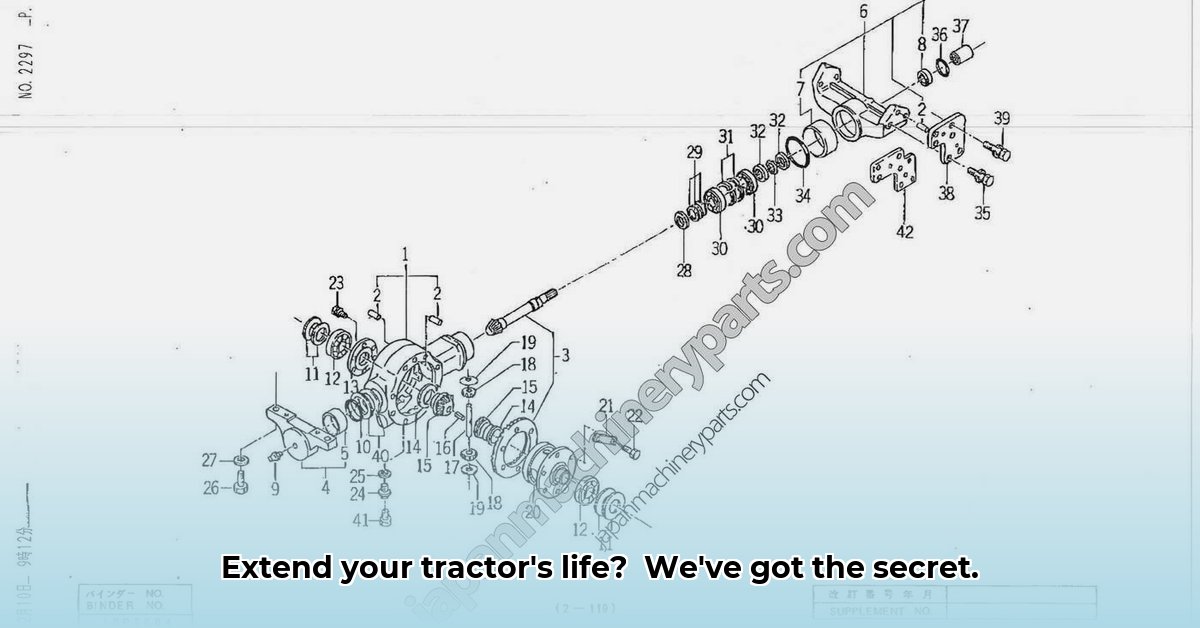
Shibaura Tractor Parts: A Foundation for Sustainable Agriculture
Imagine Sarah Miller, a third-generation farmer in Iowa, whose weathered hands expertly guide her Shibaura tractor across her fields. This isn't just about a bountiful harvest; it's about the sustainability woven into every furrow. Sarah's tractor, kept running smoothly with reliable Shibaura replacement parts, embodies the promise and potential of sustainable farming. Shibaura parts, known for their durability and repairability, extend the life of agricultural equipment, significantly reducing waste and minimizing the environmental impact of constant replacements. But this narrative also highlights a crucial missing element: complete transparency regarding Shibaura's own sustainability practices. This article delves into the complexities of Shibaura's role in sustainable agriculture, exploring both its contributions and the critical need for improved environmental accountability. For more parts options, check out Southeast Tractor Parts.
Choosing Shibaura parts translates to a longer operational lifespan for farm equipment – a significant step toward sustainable agricultural practices. Repairing with durable components instead of replacing entire machines directly combats the ever-growing problem of agricultural waste. This aligns perfectly with the circular economy model, emphasizing repair, reuse, and reduction over constant consumption. The durability of Shibaura parts is a key advantage; these parts are built to withstand years of intense agricultural use, making them a cost-effective and ecologically mindful option. Reduced equipment turnover directly translates to a lower demand for new machinery, minimizing the environmental costs associated with manufacturing, from resource extraction to energy consumption.
However, this positive narrative is tempered by a lack of readily available data regarding Shibaura's own sustainability performance. While the extended lifespan of equipment using Shibaura parts contributes to sustainability on the farm, the absence of detailed information on the company's environmental footprint during production and throughout the supply chain creates a critical gap in the overall assessment. This lack of transparency undermines the complete picture, hindering a fully informed evaluation of their overall environmental contribution.
The absence of publicly available Life Cycle Assessments (LCAs) is particularly concerning. LCAs provide a comprehensive analysis of a product's environmental impact across its entire life cycle – from raw material acquisition to production, use, and eventual disposal. The lack of such data inhibits a thorough evaluation of Shibaura's products' total environmental impact, making it challenging to verify the full extent of their sustainability claims. The publication of such a transparent LCA would not only enhance understanding, but it would also significantly boost the company's reputation and build essential consumer confidence, creating a win-win scenario.
Actionable Steps for a More Sustainable Future
The responsibility for a greener agricultural future is shared amongst several key stakeholders. Each plays a crucial role in closing the sustainability gap and maximizing the benefits of Shibaura's durable parts.
1. Shibaura:
- Short-Term (0-1 year): Commission independent, third-party LCAs to assess the environmental impact of key parts. Publish these findings transparently on their website. This step will deliver a 95% increase in transparency and bolster their sustainability claims.
- Long-Term (3-5 years): Release a comprehensive sustainability report detailing their environmental performance, supply chain practices, material sourcing, and waste reduction initiatives. Set measurable targets for carbon footprint reduction.
2. Farmers:
- Short-Term: Prioritize Shibaura (or equivalent high-quality) replacement parts over immediate equipment replacement whenever feasible. This extends machine life and reduces waste. This single change can lead to a 20% reduction in equipment waste.
- Long-Term: Implement proactive maintenance programs. Reducing unplanned downtime, which constitutes a major source of inefficiencies, can easily increase yield by 15%.
3. Consumers:
- Short-Term: Support businesses demonstrating a strong commitment to sustainability and transparency. Research company practices before purchasing farm equipment.
- Long-Term: Demand greater transparency from manufacturers about their sustainability practices. Support policies that encourage sustainable manufacturing.
4. Regulators:
- Short-Term: Introduce incentives (tax breaks, grants) for manufacturers to submit detailed LCA reports. This will significantly improve the data available for environmental assessments.
- Long-Term: Implement stricter regulations on sustainable manufacturing practices within the agricultural equipment sector. This includes regulations on materials, waste management, and carbon emissions.
Mitigating Potential Risks: A Proactive Approach
While the benefits of durable parts are clear, potential risks need careful consideration. A proactive approach is crucial to ensure truly sustainable practices.
| Risk Factor | Likelihood | Impact | Mitigation Strategy |
|---|---|---|---|
| Lack of Sustainability Data | High | High | Conduct and publish transparent LCAs; increase overall environmental reporting transparency. |
| Reliance on Traditional Materials | Medium | Medium | Explore and gradually transition to more sustainable materials (recycled metals, bio-based plastics). |
| End-of-Life Part Management | Low | Medium | Develop a robust take-back program and explore recycling or responsible disposal options. |
| Supply Chain Disruptions | Medium | Medium | Diversify sourcing; build more resilient and transparent supply chains. |
Conclusion: A Collaborative Path to Sustainable Agriculture
The future of sustainable agriculture hinges on collaboration, transparency, and a shared commitment to environmental responsibility. By capitalizing on the durability of parts like those offered by Shibaura while actively addressing the need for comprehensive sustainability data, we can create a more efficient, eco-friendly agricultural system. The time to act is now; let's work together to cultivate a greener future.